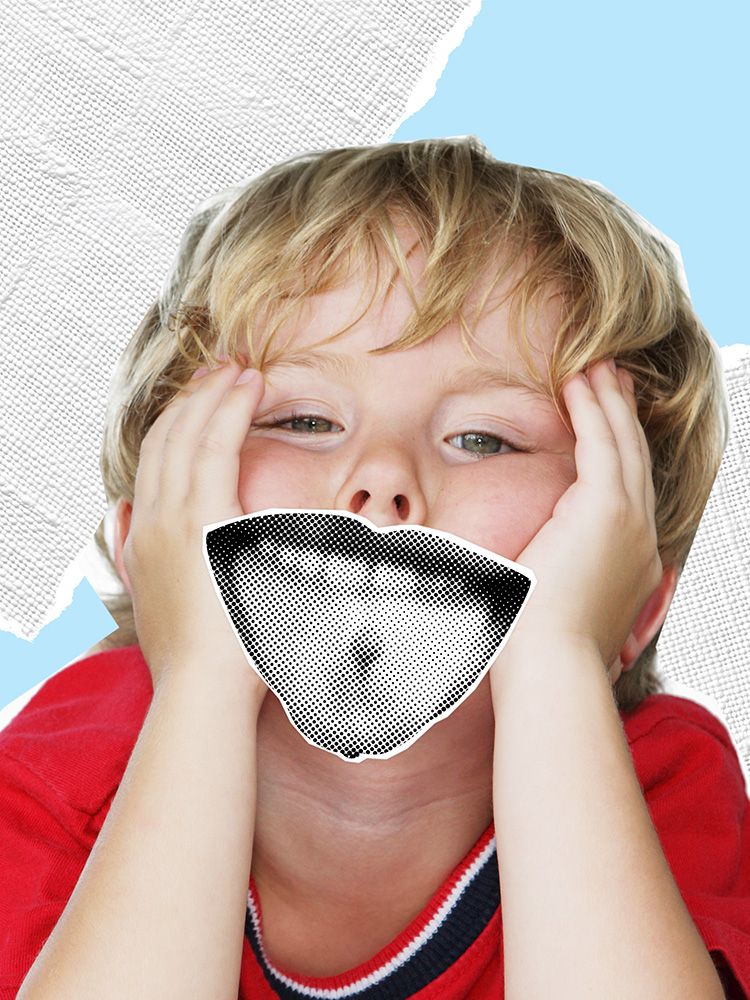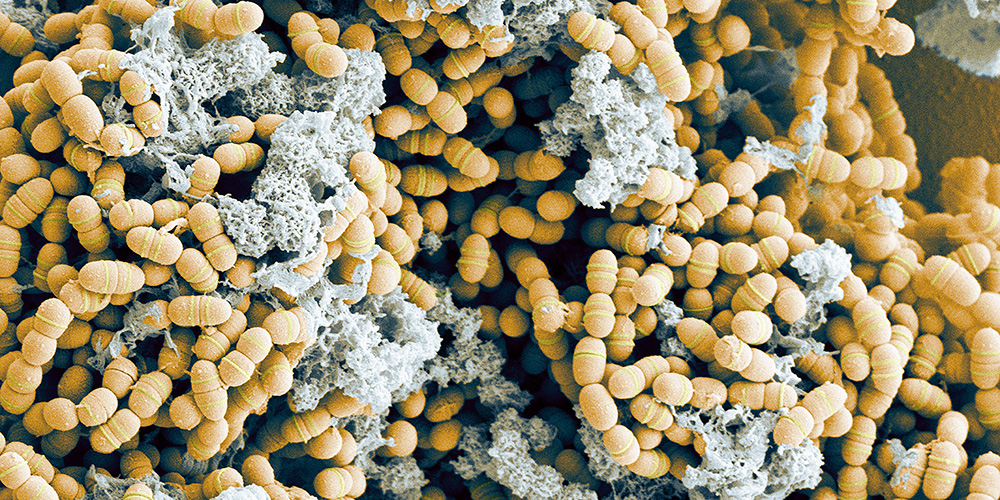New method to fight tooth decay.
Text: Angelika Jacobs
Everyone wants to maintain healthy teeth for as long as possible. Researchers at the University Center for Dental Medicine Basel UZB are studying how to keep cavity-causing bacteria at bay.
How often should we brush our teeth? Just twice a day — mornings and evenings? Or should we be brushing after every little snack, too? “If you’re going to snack, it’s better to do so after your main meal,” says Monika Astasov-Frauenhoffer. That way, the pH of your mouth won’t repeatedly drop to acidic levels, creating a favorable environment for tooth decay.
Astasov-Frauenhoffer and her colleague Viktoriya Shyp are researchers at the University Center for Dental Medicine Basel UZB. When they advocate for brushing our teeth after every meal, they know what they’re talking about. Their field of research: the bacteria of the human mouth. Over 700 types of bacteria populate the nooks and crannies of the oral cavity. Of these hundreds of strains, many are benign neighbors to our teeth. “In a balanced oral microbiome, the good bacteria keep the pathogenic ones in check,” explains Shyp. That’s good for our teeth and has other benefits besides. Studies are increasingly showing that the microbiome of our mouth is linked to our mental health, too.
A high-sugar diet and poor oral hygiene shift the balance of our oral microbiome to favor the foes of our teeth. The most fiendish of these is known as Streptococcus mutans, and it can cling to tooth surfaces. Once there, if we fail to remove it, it can form a stable coating known to specialists as a “biofilm.” In this form, the bacteria aggregate so tightly that they can resist even the most persistent brushing. These bacteria, now firmly anchored to the teeth, transform sugar from our food into acid, which, in turn, damages our enamel. This causes cavities.
Regular brushing and flossing significantly reduce the risk of cavities. Yet defending the health of our teeth remains a constant battle. Braces, aligners and other orthodontic applications provide additional hiding places for bacteria, and they can only be cleaned using special brushes and mouthwash. Often, even that is not enough.
So, is there a cure for cavities?
At UZB, Shyp and Astasov-Frauenhoffer are researching new methods of preventing bacteria from aggregating on tooth surfaces and orthodontic devices. Among other things, they are testing essential oils and certain plant metabolites known as flavonoids. The two researchers select substances that are already proven to have anti-inflammatory or antimicrobial properties. “The mechanisms behind these properties can be complex, and they are not yet fully understood,” says Shyp.
In the case of essential oils, the mechanisms are also difficult to study, as these oils contain a multitude of substances. Therefore, Shyp studies isolated substances in their purest form — such as the aforementioned flavonoids — to better understand the mechanisms behind their efficacy.
She grows cavity-causing bacteria in Petri dishes equipped with many tiny recesses. In each of these recesses she places a specific quantity of different flavonoids. She then gives the bacteria time to produce a biofilm. After several hours or days, she dyes the biofilm in the Petri dishes and measures the thickness of the bacterial growth using spectrophotometers or microscopes.
In other experiments, Shyp and her colleagues test how the composition of a mixture of good and bad oral bacteria changes when different flavonoids are added. In further tests, they conduct detailed analyses of changes to metabolic processes in pathogenic bacteria to determine whether the cellular processes that damage teeth increase or decrease in response to the presence of flavonoids.
In such experiments, the flavonoid phloretin, for example, has emerged as a potential counteragent to bacterial biofilms on the teeth. Phloretin is a powerful antioxidant and is present in apple trees, among other plants. Once mixed into the culture medium containing the cavity-causing bacteria, phloretin halts bacterial growth and prevents biofilm formation.
Testing in the artificial mouth.
If, following initial testing, a substance proves to be a promising candidate in the fight against biofilms, the researchers conduct analyses under more complex conditions. To do this, Astasov-Frauenhoffer constructed an artificial mouth to better imitate real-life conditions. The small plastic chamber is attached to tubes and pumps that conduct a bacteria-containing, saliva-like substance through the chamber at the same average speed at which saliva flows through the mouth: 0.8 milliliters per minute. The researchers can place different surfaces inside the chamber. These include materials such as artificial enamel, dentin — the tissue of the inside of the teeth — and plastics used in dental implants and orthodontic appliances. After three days, Astasov-Frauenhoffer determines whether bacteria have aggregated on the test materials or whether one of the substances administered during the test reduced biofilm formation.
In one of her projects, Astasov-Frauenhoffer and her colleagues tested whether biofilm formation on a new material for clear aligners was reduced if the material was loaded with essential oils. “Many of these oils are already used in dental hygiene products, so users are accustomed to the taste,” says Astasov-Frauenhoffer. Her team found that essential oils reduce the ability of cavity-causing bacteria to form biofilms on the plastics they tested. An industry partner is currently examining how these findings can be developed for use in a finished product.
Basic research for dental practice.
Although their research is application-related, both Astasov-Frauenhoffer and Shyp are most interested in fundamental insights. “We’re especially interested in the relationship between the structure and functions of dental biofilm inhibitors,” says Shyp. Many natural flavonoids are highly pigmented or have a strong flavor, which limits their direct use in oral hygiene products. “But by studying biofilm inhibition mechanisms with various small molecules, we’re laying the groundwork for more effective — and more practical — alternatives,” explains Shyp.
Although we may one day produce even more efficient mouthwashes, the relentless battle against the enemies of our teeth is ongoing. So brush twice a day, if not more often.
Monika Astasov-Frauenhoffer is a research scientist and co-group leader in oral microbiology at the University Center for Dental Medicine Basel (UKB). Prior to that, she completed her doctorate in biomedical engineering.
Viktoriya Shyp is a research associate and co-group leader in oral microbiology at UZB. Prior to that, she completed her doctorate in biochemistry and biomedical engineering.
More articles in this issue of UNI NOVA (May 2025).


